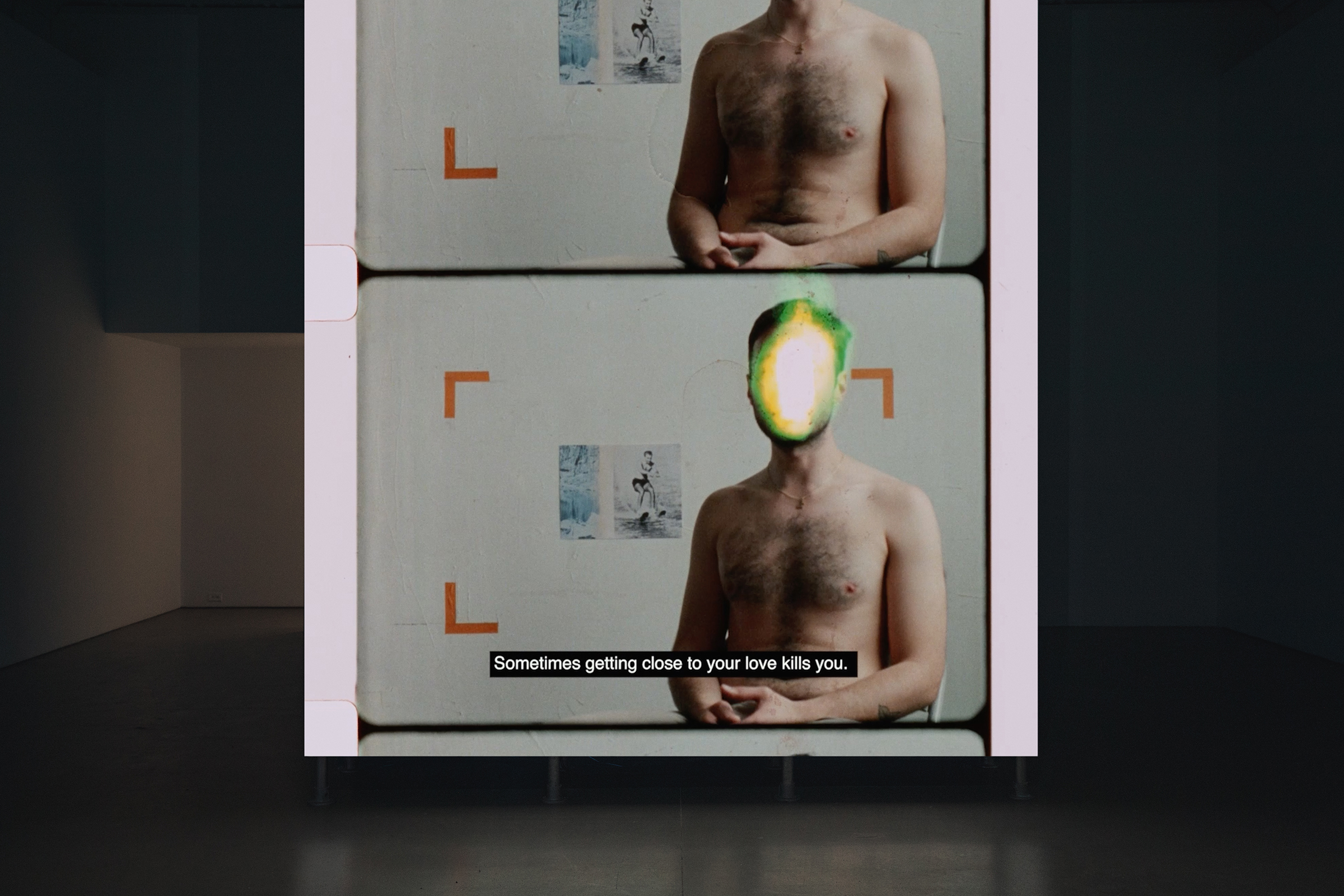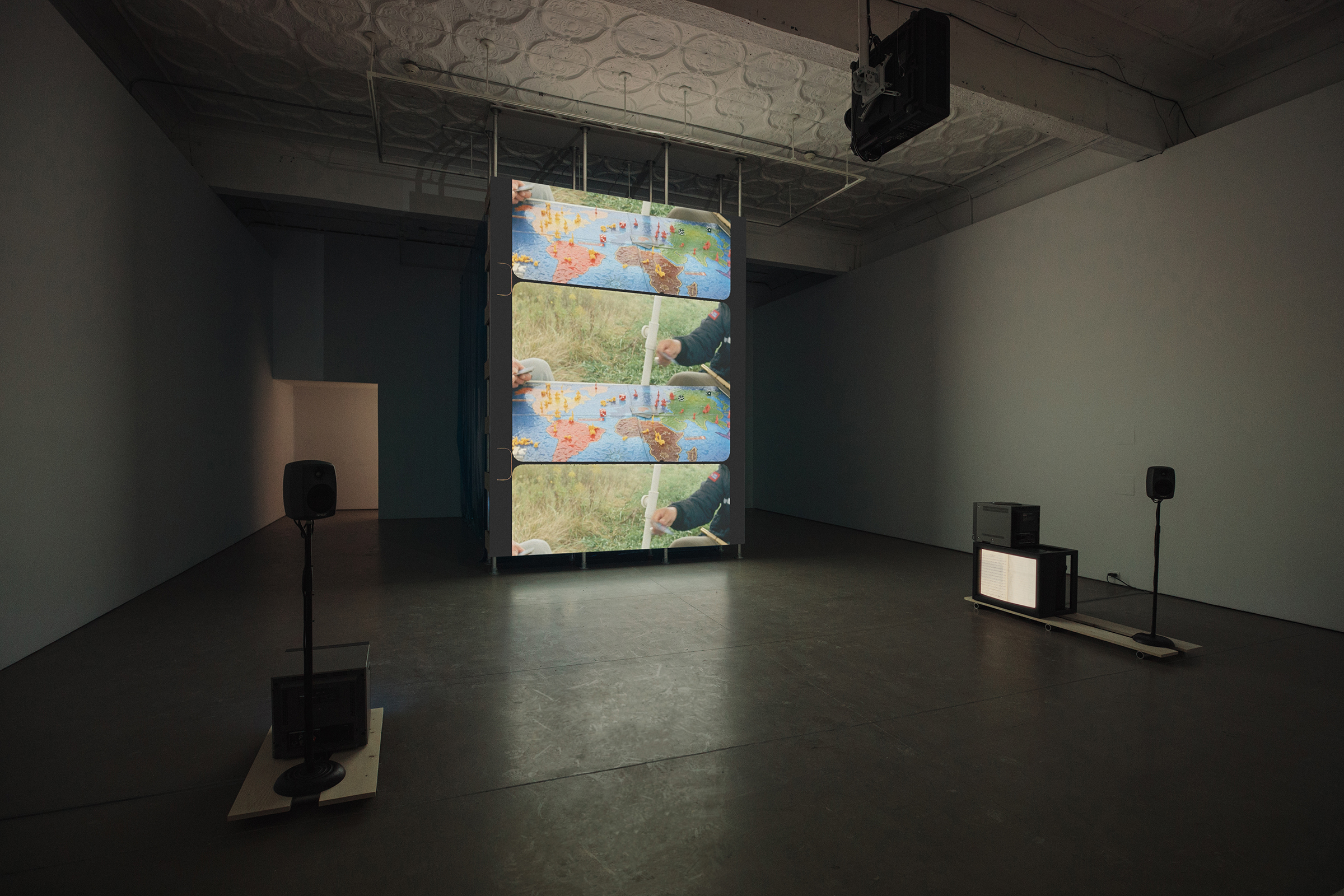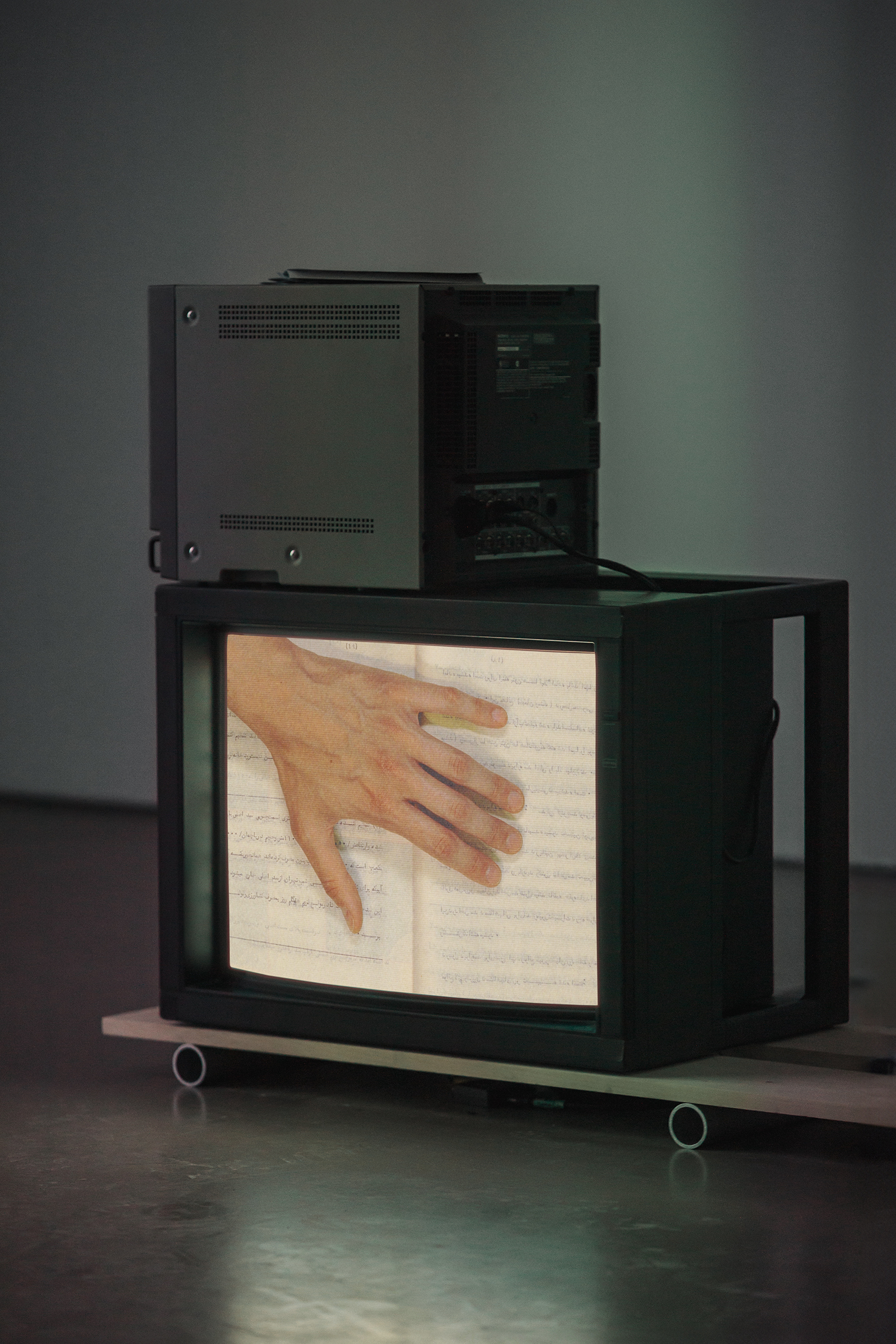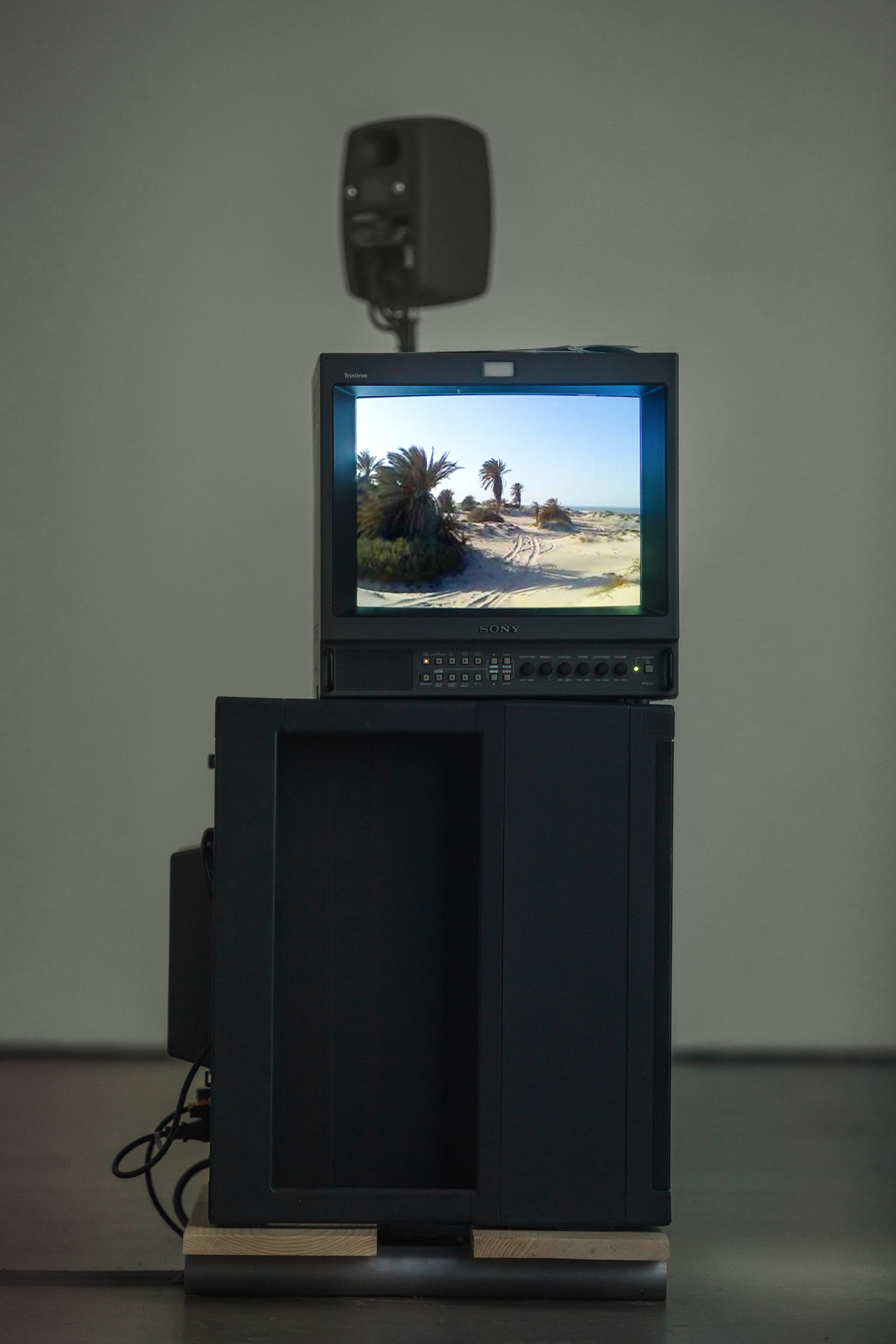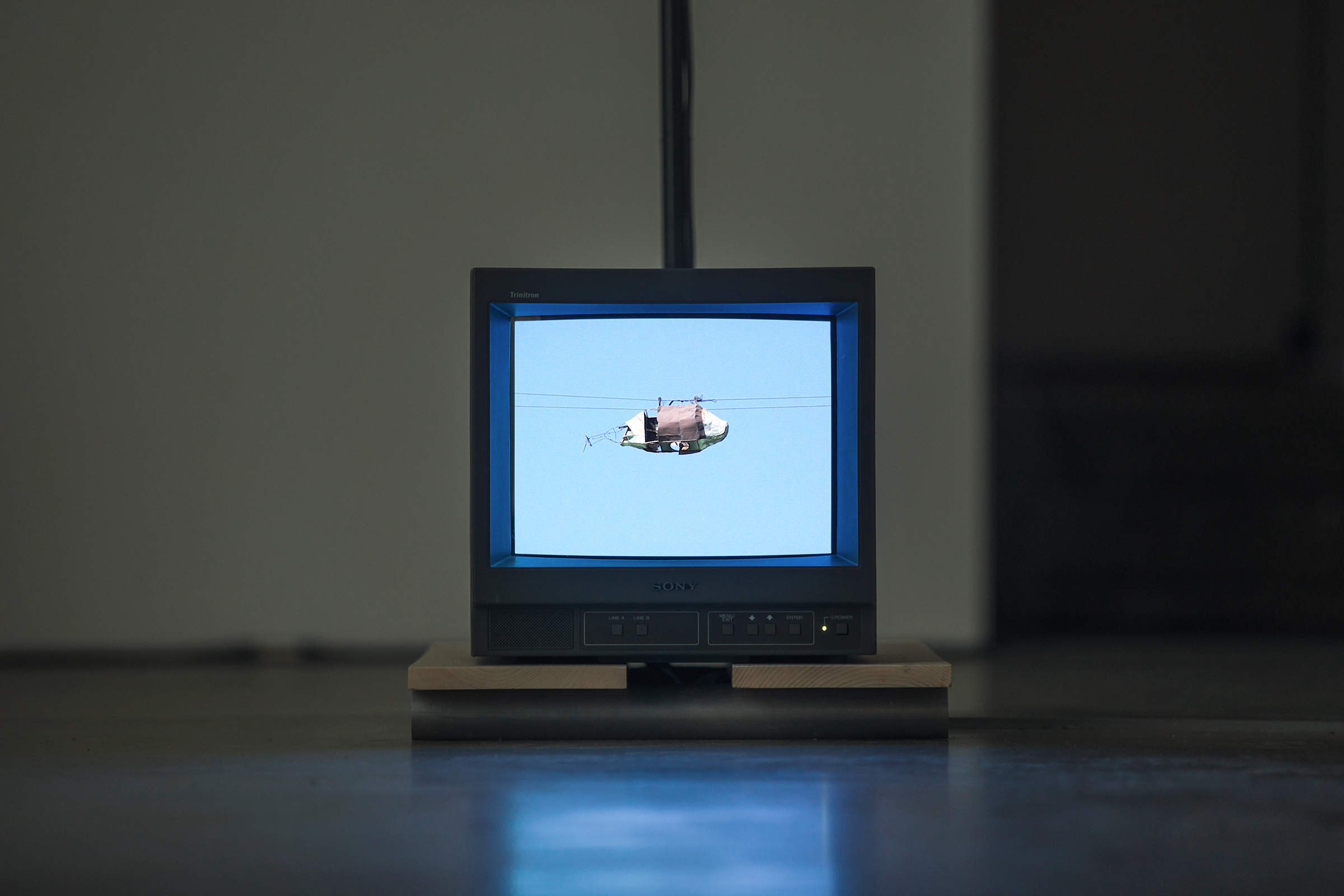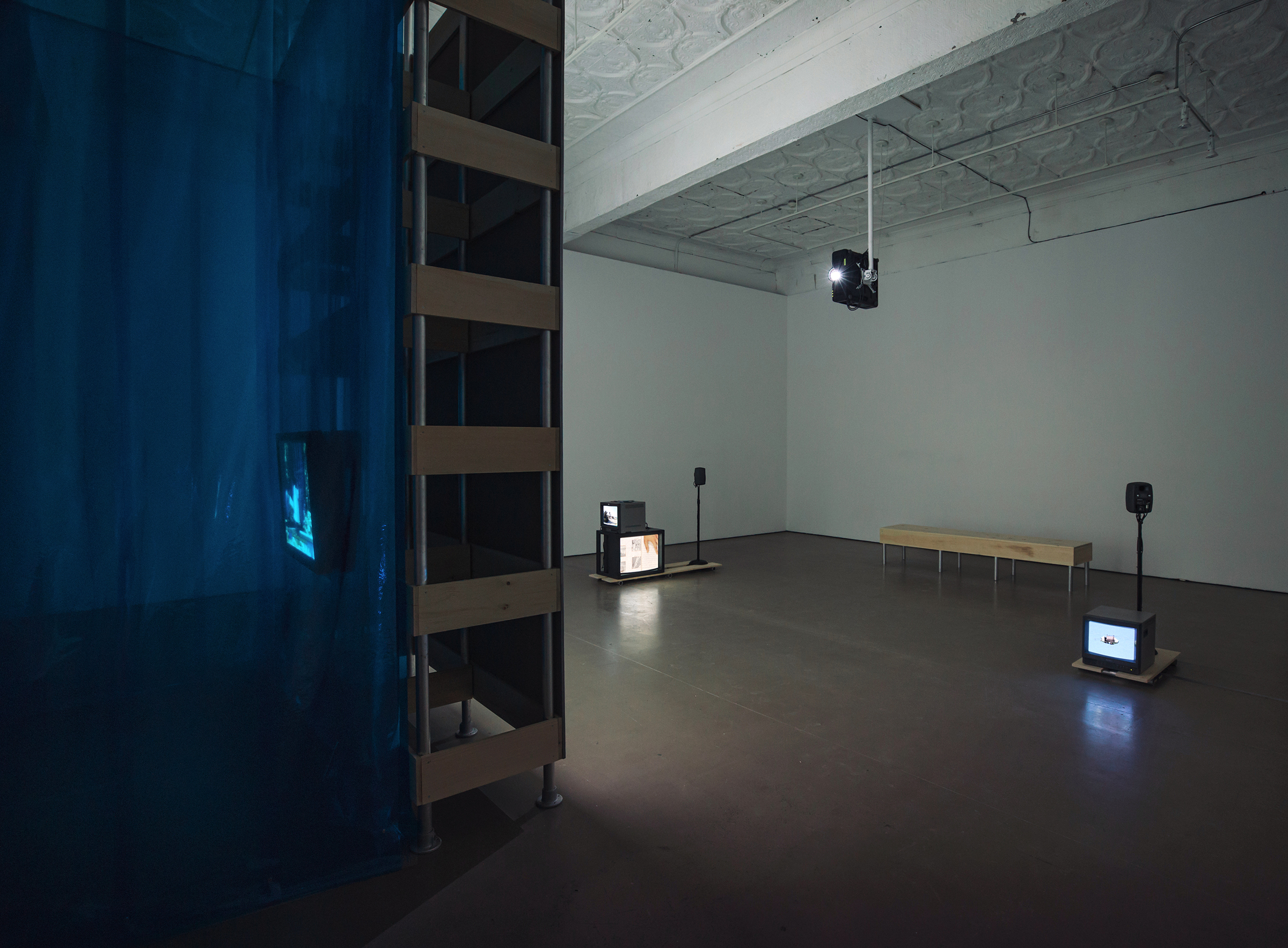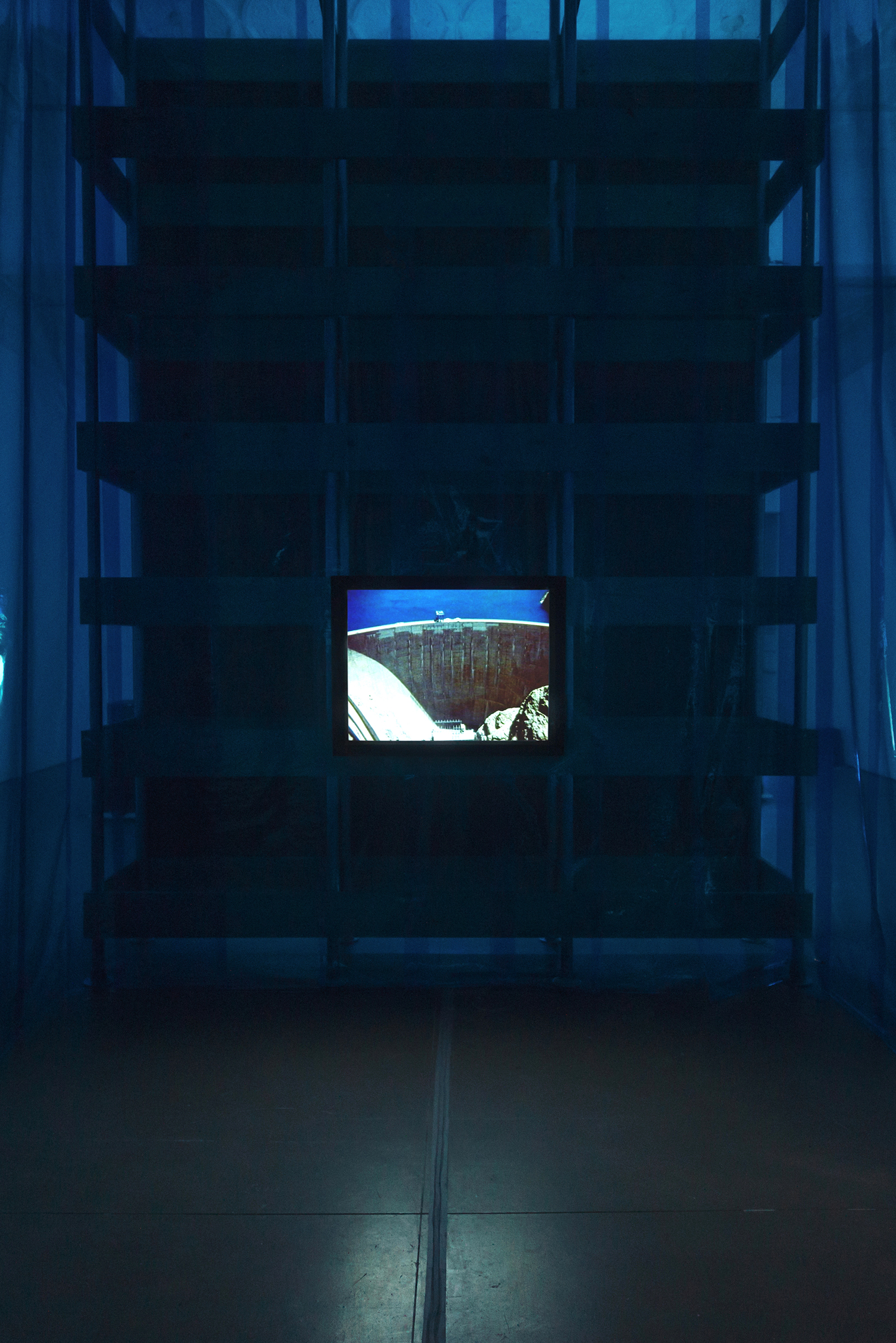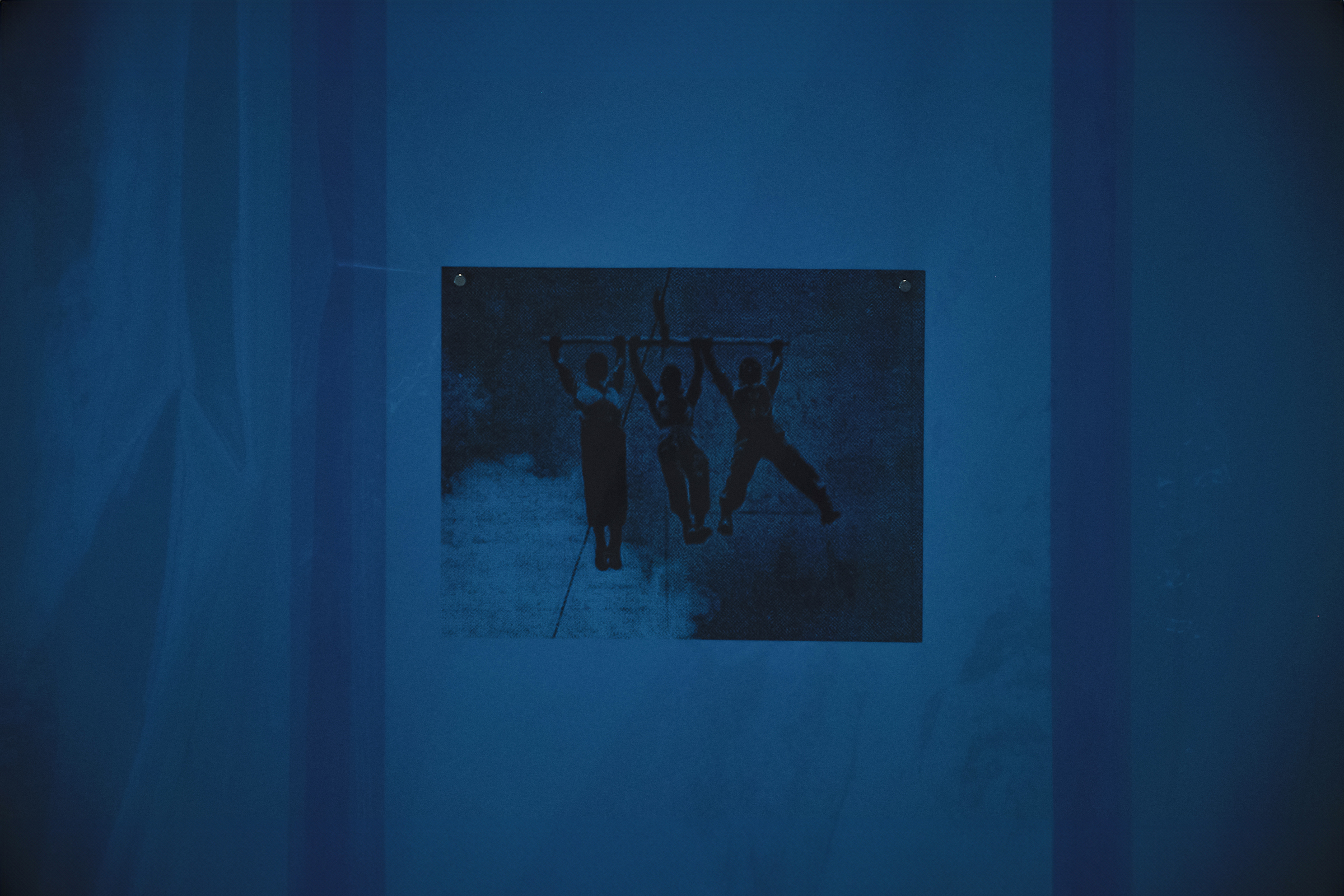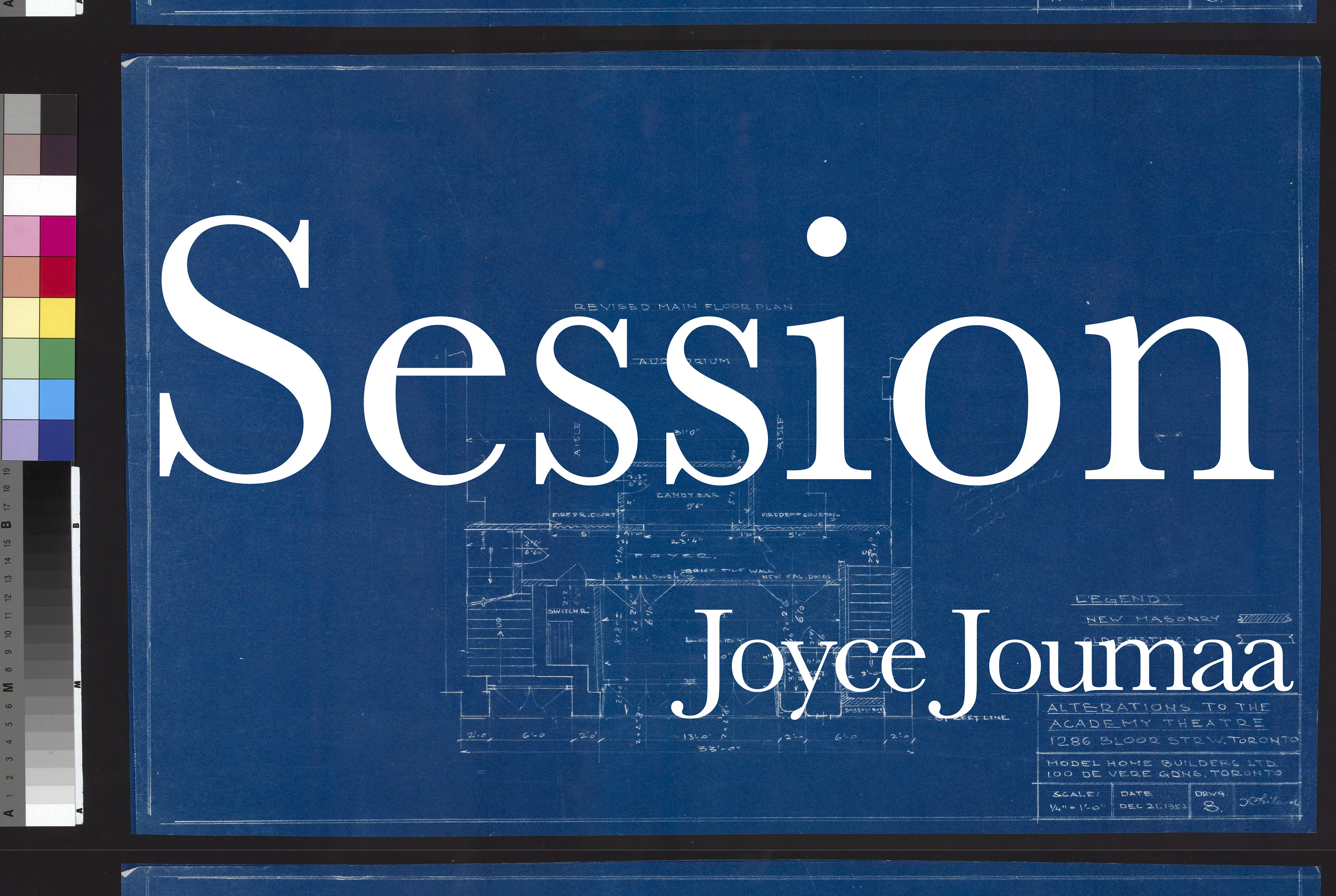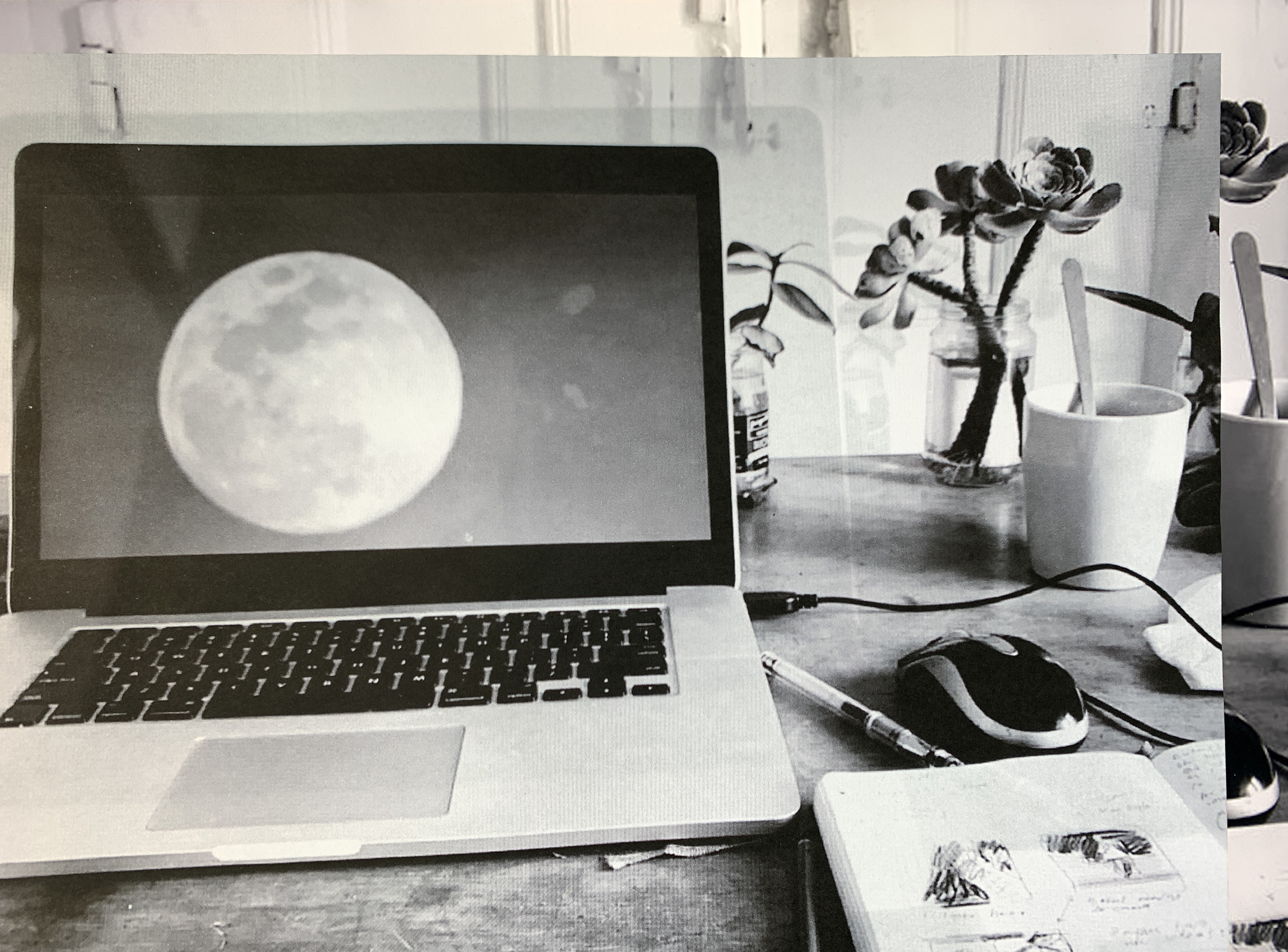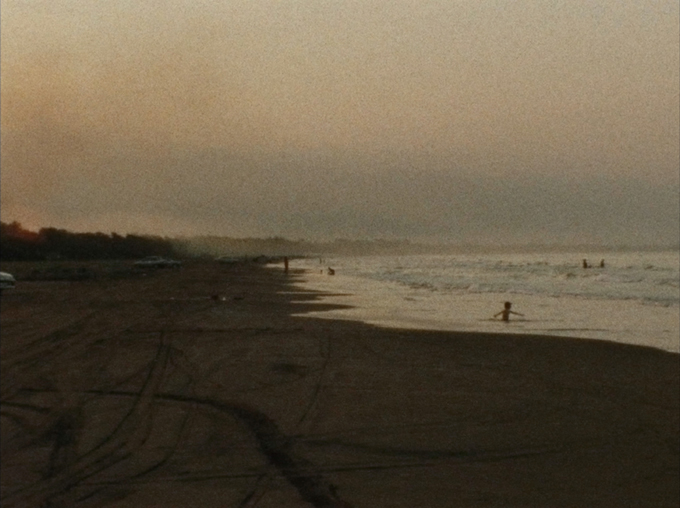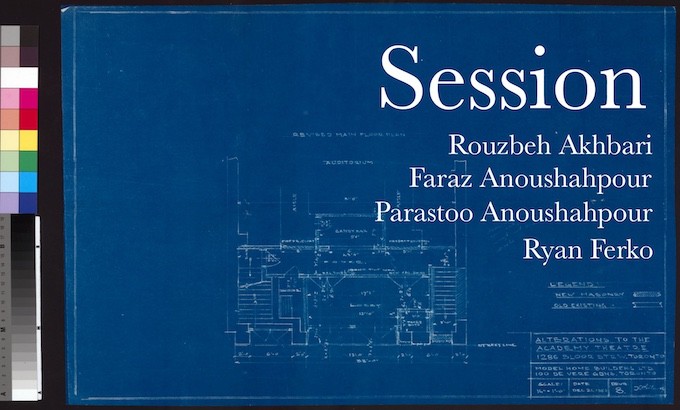Artist First is Mercer Union’s commissioning platform and the first of its kind amongst artist-run centres in Canada.
The collaborative filmmaking practice of Parastoo Anoushahpour, Faraz Anoushahpour, and Ryan Ferko explores tensions and uncertainties within images to surface critical perspectives on collective memory and the historical trace. Working between speculation, historical fiction, and documentation, the artists’ projects often excavate existing narratives to uncover the power relations and subjectivities shaped by them. Their exhibition, Lovers’ Wind, takes its starting point from the helicopter crash at Karaj Dam near Tehran that killed French filmmaker Albert Lamorisse in 1970, during the production of Le Vent des Amoureux (Bād-e Sabā, 1978), a state-funded documentary about Iran.
In the gallery, a tower structure bisects the space, its two faces hosting distinctive works in tension with one another. On one end, the central, eponymous work of the exhibition flows across multiple screens. It begins with the wind, recalling the figure of the Sabā that narrates the documentary—following the literary tradition of personifying the easterly breeze—and attunes to the motif with a criticality that resists Lamorisse’s appropriation. Filmed in multiple formats including 16mm, the work takes up the formal and allusive qualities of sound, speech, and breath as enlivened winds that transmit, disrupt, and dislocate the narrative across spatial and temporal borders. This movement extends to the works’ nonlinearity, which carries the spectre of Lamorisse between Iran, Tunisia, and Canada—at times inhabited by a character, and in other moments traced by environments and objects: a shoreline, a cemetery, a red balloon, the remains of a helicopter. In a critical play of visual and textual references, the strategy board game popularized under the name Risk and peculiarly invented by Lamorisse, figures throughout the work in various environments. It offers an analog for examining the aerial perspectives of Iran that direct much of Le Vent des Amoureux and unpacks a relationship between visual tactics of domination and the construction of a national identity.
On the other side of the tower, surrounded by a soft enclosure, the drowned footage recovered from the crash site reappears on an isolated screen. Referentially titled Postscript, the work is anchored by a phone conversation with an archivist that meanders in speculations about the filmmaker’s death, and the restoration and circulation of his last images. Developed over three years of archival, community, and media research, the artists’ project takes stock of the broader historical context within which Lamorisse produced Le Vent des Amoureux and its posthumous release during the lead-up to the Iranian Revolution. Exploring the reverberance of these themes, the works in the exhibition unfold scripted and unscripted encounters with Iranians both at home and in diaspora, to trace the edges of memory and its disjuncture with the record. From the near-total opacity of deep waters to the illimitable view from the skies, submersion and projection offer conceptual devices for testing the representational capacity of an image, and the narrative space that opens up in its instability.
Parastoo Anoushahpour, Faraz Anoushahpour, Ryan Ferko: Lovers' Wind is the sixth project developed through Mercer Union’s Artist First commissioning platform, and their first institutional solo exhibition in Canada.
